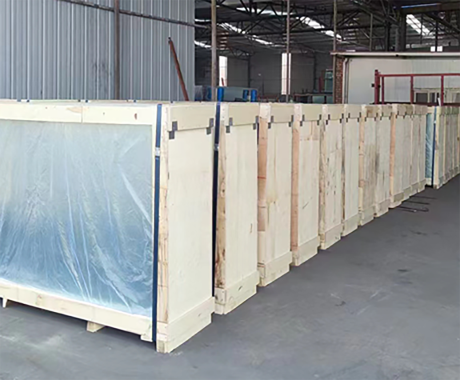

The Aesthetic and Functional Appeal of Decorative Laminated Glass
Decorative laminated glass combines aesthetic beauty with functional versatility, making it a popular choice in architecture and interior design. This innovative material is composed of two or more layers of glass bonded together with a durable interlayer. The interlayer, which can be made from polyvinyl butyral (PVB), thermoplastic polyurethane (TPU), or ethylene-vinyl acetate (EVA), not only enhances the glass’s safety and strength but also offers a platform for a wide array of decorative finishes.
One of the most enticing aspects of decorative laminated glass is its ability to transform spaces while providing essential benefits. For instance, it can be customized with various colors, patterns, and textures, allowing architects and designers to create distinct visual effects. From elegant frosted designs to vibrant printed images, the possibilities are endless. When used in buildings, decorative laminated glass can transform a mundane facade into a striking architectural statement.
The safety aspect of laminated glass cannot be overlooked. In the event of breakage, the laminated structure prevents the glass from shattering into dangerous shards, holding the pieces in place and significantly reducing the risk of injury. This quality makes it an ideal choice for high-traffic areas, such as shopping malls, schools, and public buildings. Moreover, the inclusion of tinted or reflective interlayers can enhance privacy and reduce glare, creating comfortable environments for both occupants and visitors.

In addition to safety, decorative laminated glass is notable for its energy efficiency. The laminated structure can provide better thermal insulation compared to traditional glass, reducing heating and cooling costs. This aspect helps meet growing demands for sustainable building practices and energy-efficient designs. By incorporating decorative laminated glass into their projects, architects can achieve both beauty and functionality while minimizing environmental impact.
Another significant advantage of decorative laminated glass is its acoustic performance. The layering process effectively dampens sound, making it an excellent choice for spaces that require noise reduction. This characteristic is particularly beneficial in urban areas or buildings located near busy roads, where sound pollution can be a concern.
Beyond commercial applications, decorative laminated glass has found its place in residential settings, offering homeowners the opportunity to infuse personal style into their living environments. From stunning shower enclosures to stylish room dividers, this versatile material can be incorporated into almost any area of the home. With the right design choices, homeowners can create unique focal points that reflect their personal taste while benefiting from the practical advantages of laminated glass.
In summary, decorative laminated glass is an exceptional material that combines visual appeal with practical benefits. Its safety features, energy efficiency, noise reduction capabilities, and extensive customization options make it an ideal choice for a variety of applications. As architectural and design trends continue to evolve, the use of decorative laminated glass will undoubtedly grow, becoming a staple in creating beautiful, safe, and sustainable environments. Whether employed in commercial skyscrapers or cozy homes, decorative laminated glass is set to leave a lasting impression in the world of design.